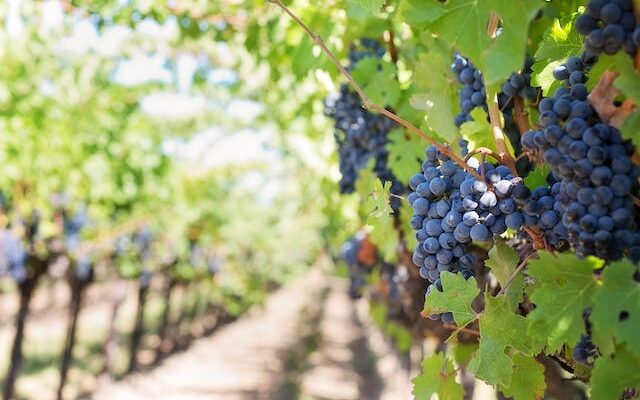Wineries, steeped in tradition and craftsmanship, offer more than just a collection of grapevines. Delve into the fascinating world of winemaking with these five intriguing facts about wineries that go beyond the cork and bottle. Explore the world of winemaking beyond the cork and bottle with these intriguing facts that showcase the rich tradition and craftsmanship of wineries.
1. Terroir Influence
The influence of terroir stands as a cornerstone in the art and science of winemaking, shaping the very essence of wine. This concept underscores the profound impact that environmental factors exert on the characteristics of grapes, thereby influencing the flavors and aromas of the resulting wine. Elements such as soil composition, climate nuances, and the altitude of a vineyard collectively contribute to the unique terroir of a specific wine-producing region. Winemakers keenly attuned to these factors cultivate a deep understanding of how the land imparts distinct qualities to the grapes, leading to a profound expression of place in each bottle. Consequently, wines from different vineyards exhibit diverse profiles, allowing enthusiasts to embark on a sensory journey that encapsulates the terroir’s fingerprint.
2. Ancient Origins
Winemaking boasts a storied and ancient lineage, with its roots tracing back thousands of years, providing a captivating narrative of human history and culture. The earliest evidence of winemaking is found in archaeological sites in the region of Georgia, unearthing the ancient traditions that laid the foundation for this enduring craft. Dating back to the Neolithic period, these discoveries reveal that early civilizations recognized the transformative potential of fermenting grapes into wine. Winemaking became more than just a means of subsistence and was included in religious ceremonies, social events, and festive occasions. As winemaking knowledge spread across ancient civilizations, it evolved into a sophisticated practice, with each culture contributing its techniques and preferences.
3. Oak Barrel Aging
The process of oak barrel aging stands as a venerable tradition in winemaking, where the choice of barrels becomes a critical element in shaping the character of the final product. Numerous wineries opt to age their wines in oak barrels, a practice that imparts unique flavors, aromas, and textures to the wine. The decision between French and American oak, each with its distinct characteristics, plays a pivotal role in influencing the ultimate taste profile. French oak is renowned for imparting subtle and nuanced flavors, contributing hints of vanilla, spice, and a refined texture to the wine.
On the other hand, American oak tends to be more robust, offering pronounced notes of caramel and toffee and a bold structure. The oak aging process introduces a layer of complexity and depth, seamlessly integrating with the existing attributes of the wine. This deliberate choice of barrels showcases the meticulous craftsmanship of winemakers, allowing them to tailor the sensory experience and elevate the overall quality of the wine. Oak barrel aging thus becomes a timeless art that harmonizes tradition and innovation in the pursuit of crafting exceptional wines.
4. Sustainable Practices
In response to a growing global awareness of environmental sustainability, modern wineries are leading a transformative shift towards eco-conscious practices. Many wineries prioritize using organic and biodynamic farming practices to produce grapes as part of their commitment to sustainable viticulture. These methods eschew synthetic pesticides and fertilizers, fostering a healthier ecosystem and minimizing the environmental footprint of grape cultivation.
Moreover, wineries are adopting energy-efficient production processes, incorporating innovations like solar power and water conservation initiatives. They lessen their need for non-renewable resources and cut down on their overall energy use by doing this. Sustainable practices extend beyond the vineyards and cellars, with some wineries implementing eco-friendly packaging and promoting recycling programs.
5. Wine Tourism Boom
The phenomenon of wine tourism has burgeoned into a vibrant trend, turning wineries into coveted destinations for enthusiasts and curious travelers alike. This burgeoning trend is not limited to traditional wine-producing regions but has also found a significant presence in places like Texas. Wineries in Texas, with their unique terroir and diverse wine offerings, have become integral players in the wine tourism boom.
Visitors to these wineries can partake in immersive experiences, embarking on vineyard tours to witness the winemaking process firsthand, engaging in tastings that showcase the distinct characteristics of Texan wines, and even participating in grape harvesting during the lively harvest season. The synergy of scenic vineyards, cultural charm, and the allure of wine craftsmanship creates an enriching tapestry of experiences beyond the bottle.
Conclusion
Wineries are more than just places where wine is made; they are living embodiments of history, tradition, and craftsmanship. Learning about the subtleties of winemaking makes it easier to appreciate the craftsmanship that goes into each bottle. Wineries, as living embodiments of history and craftsmanship, offer an enriching exploration that deepens appreciation for the artistry behind every bottle.

